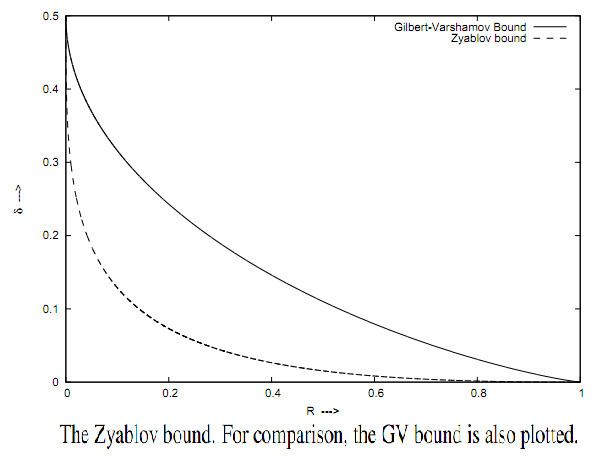 | ||
In coding theory, the Zyablov bound is a lower bound on the rate
Contents
Statement of the bound
Let
where
Description
Let
Consider
Suppose
then
Expressing
Then optimizing over the choice of r, we get that rate of the Concatenated error correction code satisfies,
This lower bound is called Zyablov bound (the bound of
Note that the Zyablov bound implies that for every
Remarks
We can construct a code that achieves the Zyablov bound in polynomial time. In particular, we can construct explicit asymptotically good code (over some alphabets) in polynomial time.
Linear Codes will help us complete the proof of the above statement since linear codes have polynomial representation. Let Cout be an
We need to construct the Inner code that lies on Gilbert-Varshamov bound. This can be done in two ways
- To perform an exhaustive search on all generator matrices until the required property is satisfied for
C i n q O ( k n ) k = r n we getq O ( k n ) = q O ( k 2 ) = N O ( log N ) n N O ( log n N )
- To construct
C i n q O ( n ) ( n N ) O ( 1 )
Thus we can construct a code that achieves the Zyablov bound in polynomial time.
